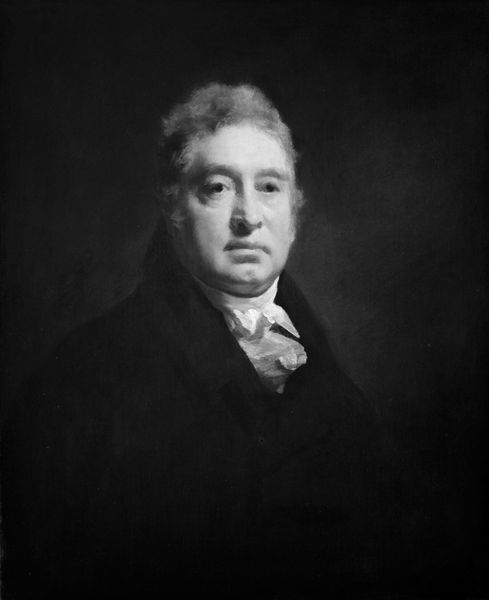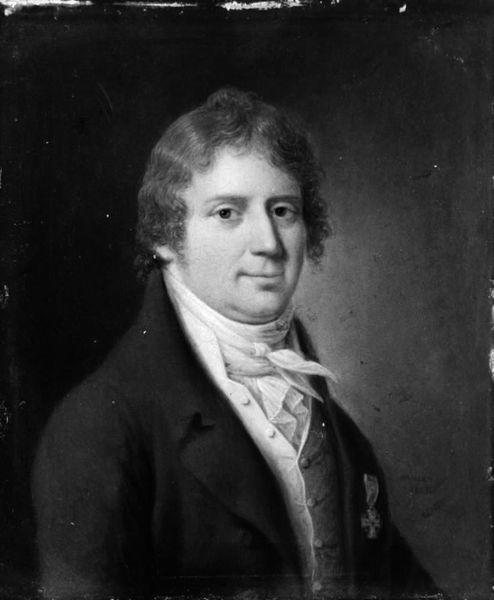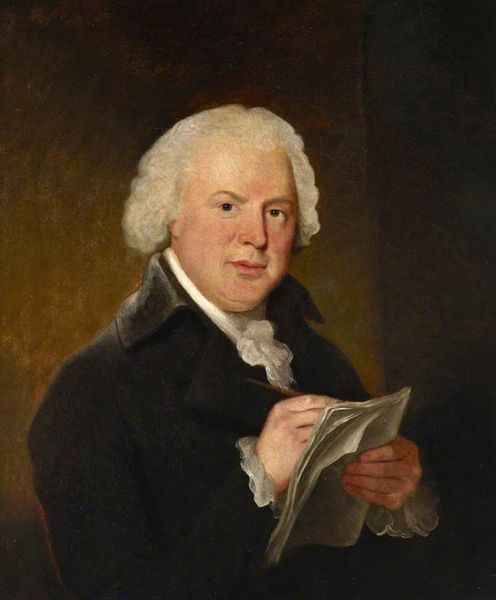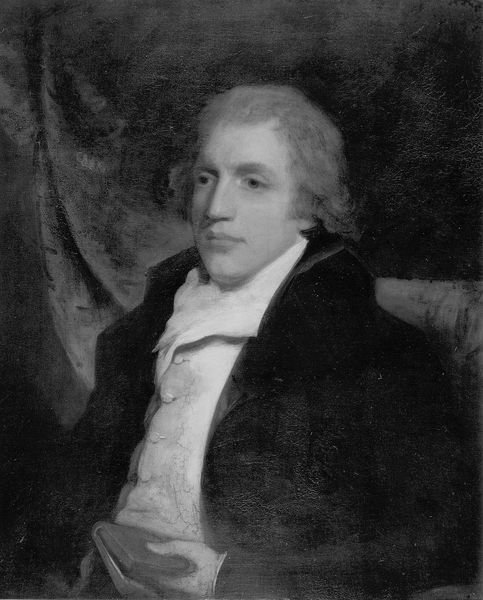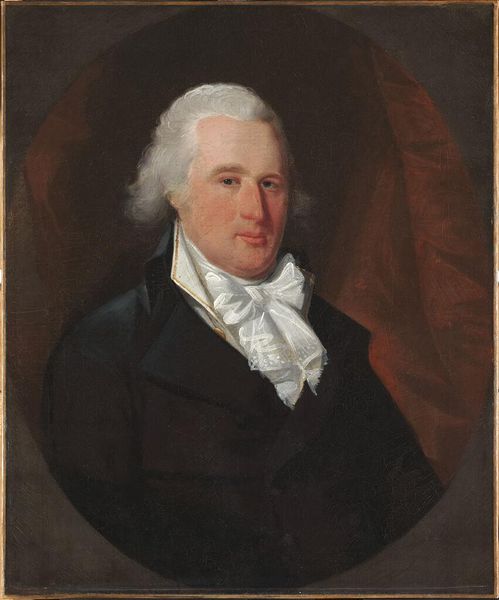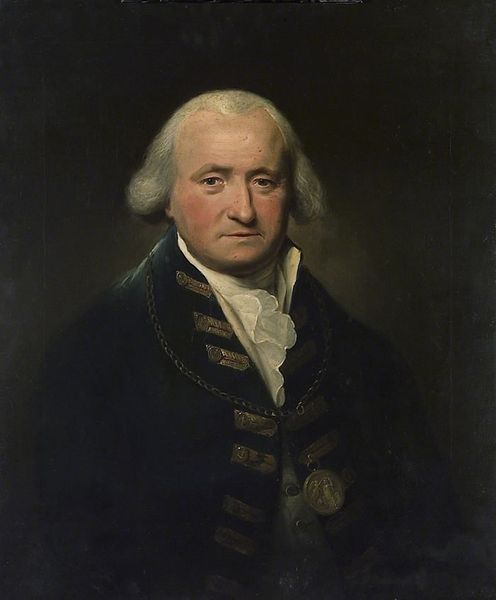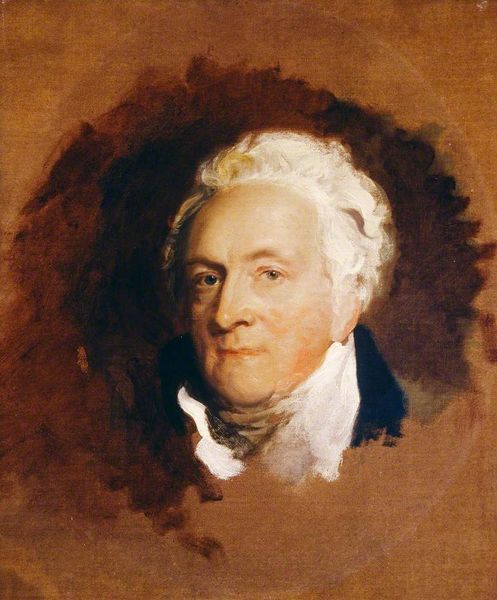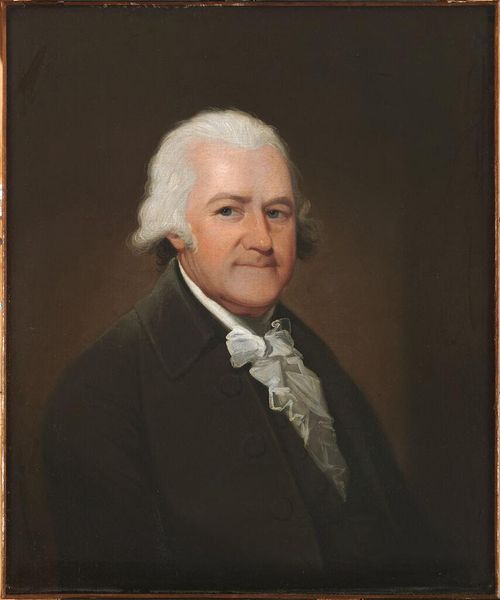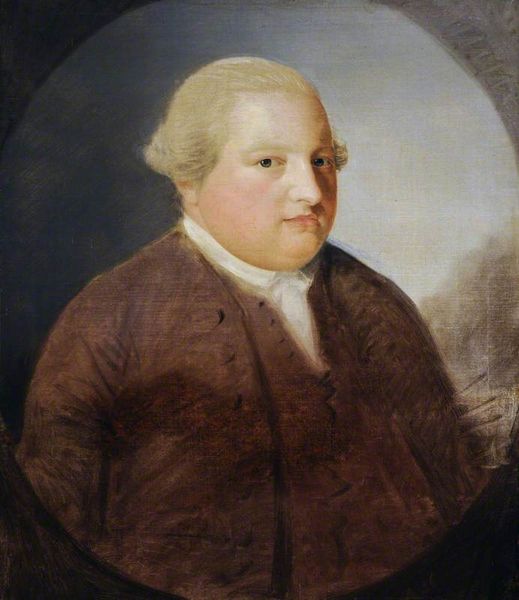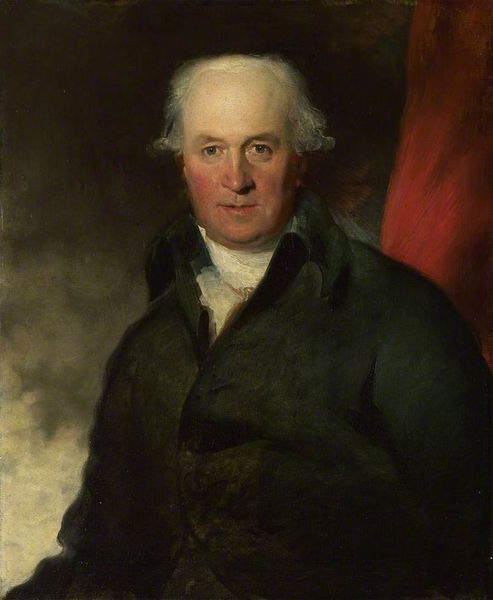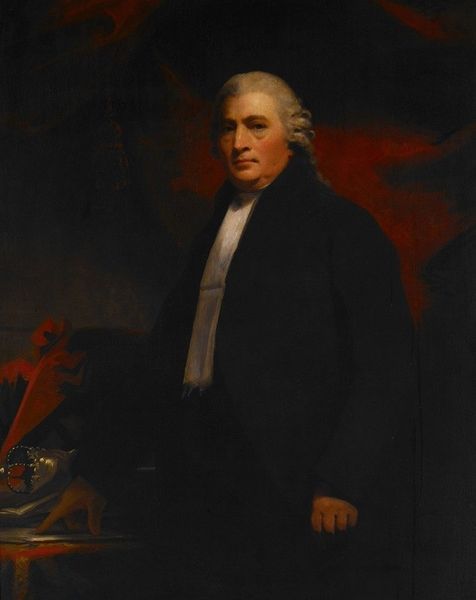
painting, oil-paint, graphite
#
portrait
#
portrait
#
painting
#
oil-paint
#
romanticism
#
black and white
#
chiaroscuro
#
graphite
#
academic-art
Dimensions: 76.2 × 63.8 cm (30 × 25 1/8 in.)
Copyright: Public Domain
Editor: Here we have Sir William Beechey’s portrait of Mark Pringle, dating from around 1797, executed in oil. It’s striking how the subject emerges from what is largely a dark ground; it's almost sculptural. What’s your take on its composition? Curator: It's an interesting question of contrasts, isn’t it? The luminosity of Pringle's face, rendered in careful detail, pulls forward against the painterly background where forms are suggested, but never quite resolved. Consider, too, how Beechey handles the light. Editor: You mean how the sharp highlights define his features? Curator: Precisely. The strategic use of light sculpts form. Note how the shadows aren’t just darkness; they're modulated tones creating depth. Now, consider the relationship between these planes of light and dark: where does the eye travel? Editor: Well, the eye definitely goes straight to his face, particularly the forehead and cheeks. The whiteness of the ruffled shirt also grabs attention. Curator: And the background? Notice how the almost abstract strokes pull the eye back to the portrait again? It frames the man in a world of pure painting, almost freeing it from the need for location. Editor: So it’s all about internal relationships, not what it represents. Curator: Exactly! It's the visual interplay that speaks, not any explicit story beyond form itself. Editor: That's fascinating! I hadn’t thought about it in terms of pure compositional elements before. Now I’m really appreciating how deliberate and structured it is. Curator: Indeed! The image exists by its own rules. The experience has been rewarding, hasn't it?
Comments
No comments
Be the first to comment and join the conversation on the ultimate creative platform.
